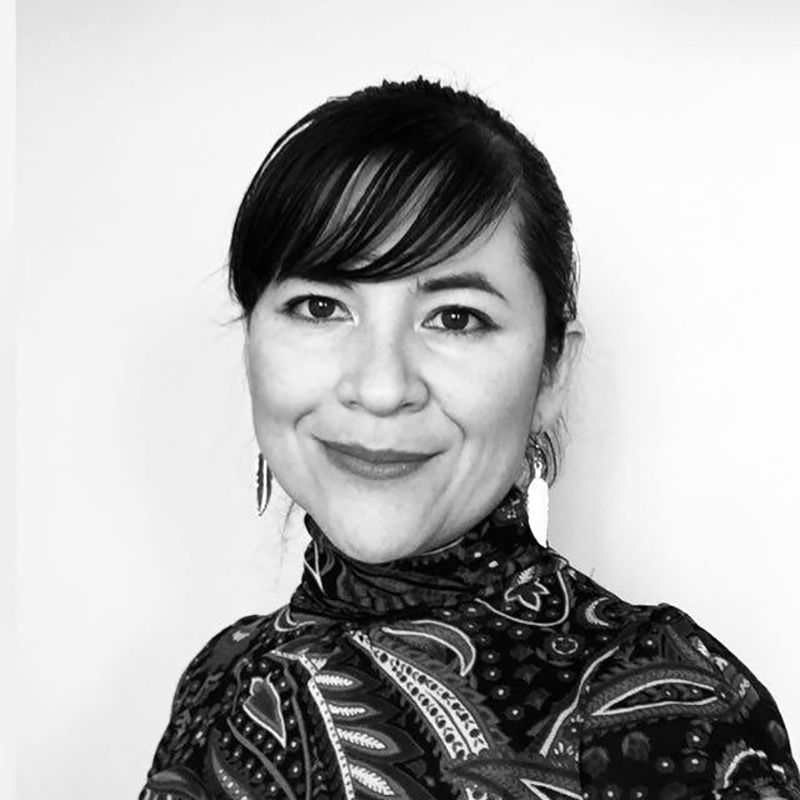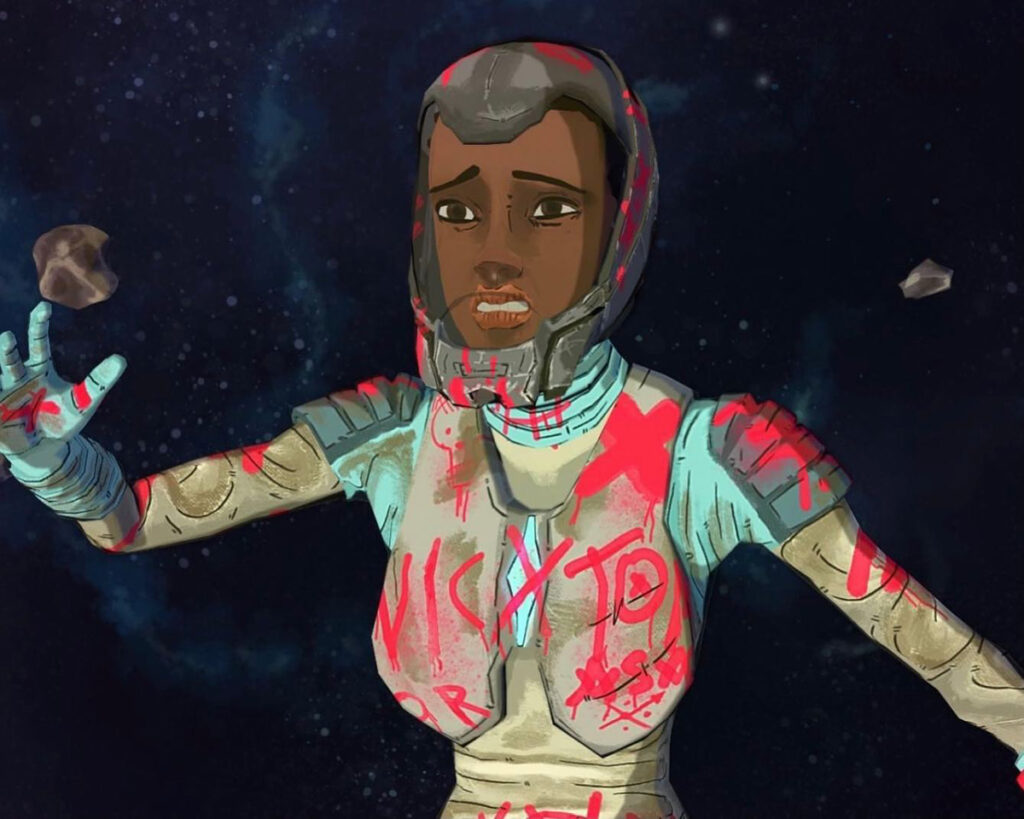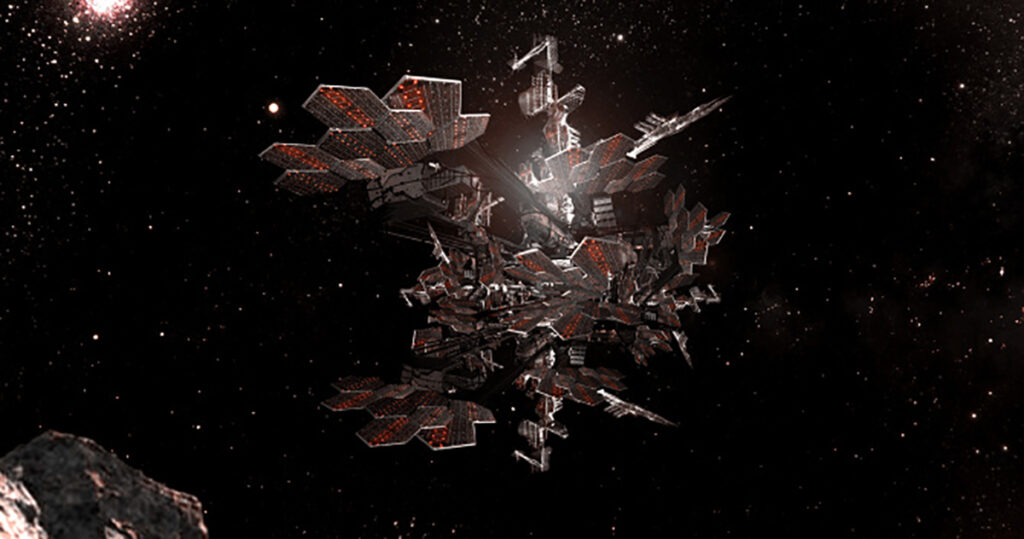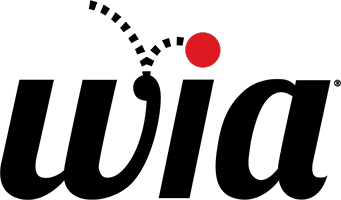Member Snapshot: Lola Barreto
Transmedia Animation Director and Founder of the WIA Colombian Chapter
December 2021, Interview facilitated by Tracey Miller-Zarneke
What is your earliest memory of being interested in animation?
I was going to a technical school to learn illustration when I was 16 and I saw the works of sci-fi French artists like Moebius and stories like Les Eaux de Mortelune. I was immersed in comics, and fan art, and I was fascinated with science fiction and illustration, but I didn’t see myself as being able to step into the animation industry. It was until I met Danilo Sanchez who saw my illustration works and portfolio and encouraged me to learn and work in animation. In that moment, my dream was to someday make a movie.
About my memories, I still remember the works of Ray Harryhausen that were broadcast in movies of the 1980s programming on Colombian national television. I didn’t know that they were Ray Harryhausen works until Edgar Alvarez, one of my mentors, told me his name and showed me the great works of Norman McLaren, Miyazaki, René Laloux, Katsuhiro Otomo, Oskar Fischinger, Brothers Quay among many others. Such works moved me substantially as they were totally different to what I was used as a little girl: Pink Panther, Gadget Inspector, The Jetsons, Garfield, Mafalda, Thundercats, Transformers, Saint Seiya, Dragon Ball, Duckula, etc. The first animated movie I saw in a theater: The Land Before Time.
Which school(s) did you attend?
Universidad Nacional de Colombia, Universidad de los Andes de Colombia, Universidad Sergio Arboleda (Colombia)
Who were/are your mentors, inside or outside of animation? How have they affected you?
I think every person I’ve met and the authors of books I’ve read have been mentors in my life. I’ve also learned a lot from the people I’ve worked with. I had two mentors when I started in animation back in 1997, Danilo Sanchez and Edgar Humberto Alvarez–they were animation pioneers in Colombia, and they showed me everything necessary to make a story reel. They loved their careers, and they still do. Later, when I entered the National University of Colombia, I met Zenaida Osorio. She was my visual communication professor and was tremendously influential in my work. She encouraged me to write and to sharpen my criticism and point of view. When I learned English, I met Matthew Rappard, Megan Gaiser and Peter Von Stackelberg, and they have been more than my friends, they have encouraged me a lot to accomplish my projects and to keep nurturing my career.
Can you please describe how you got to your current role? What are some of the challenges you had to face to get there?
Getting to where I am today wouldn’t have been possible without the help of the WIA headquarters and the effort we made with a group of women in Colombia who were struggling with common obstacles in Colombia. I volunteer for WIA, and aside I’m an independent transmedia director of T.V. animated series, writer and a design consultant. I’m currently developing a sci-fi movie and directing an animated documentary series for youth about the stories of girls and boys breaking the barriers of exclusion and inequality while demanding their identity and sexuality freedom to be in a world where they can be respected, loved and empowered.
Reaching back further in my history, since I was a little girl, I drew, wrote and got inspired by books and animation. At school, I was part of the radio group, and I used to gather other children every week to listen to the stories we created with a group of friends. Later, I was heavily engaged with comics, film and video games, but I could not study in my country nor afford abroad. I didn’t have internet back then. I got my first job as a cartoonist when I was 15 years old because I had to make ends meet. In 1998, I got my first job as an art director in an animation studio in my country. I learned animation before furthering my studies in Design at the National University of my country. I later studied English, Cognitive Science, Intellectual Property Law and Strategic Management. I have opened and closed three companies in animation and Design in Colombia. I think the hardest thing I had to face working in my country was when I had to close down my last animation studio and to accept that there were rooted barriers in the overall storytelling of the country and the world, invisible barriers, that make it difficult for those who are trying to make meaningful change. It’s not about the bad luck, lack of talent, lack of experience…it’s all about the rooted bias that remains in small-minded, judgmental leaders.
What is your favorite part of your role? Most challenging part?
The favorite part of my role is to see how other women grow and young people find in animation a mission beyond selfish interest, to make meaningful impact in the world. Seeing the vision coming true is priceless.
Share with us a moment of exhilaration in your career.
When we shifted from coloring acrylic sheets to coloring with software, that was a massive change for many colorists and animators back in time. Then when I first saw one of the animations I did on TV, it blew me away. Later, when I was able to work for the rebranding of Nickelodeon UK and they let me do my freestyle, it was a fantastic feeling! Another moment was when I could finally travel to Canada, home of great pioneers like Norman McLaren and thinkers like Marshall McLuhan. Also, when I travelled to Japan to go to the Ghibli Museum–I think it was the same feeling Catholics have when travelling to Rome, just that instead of praying, I was reading Ghibli’s masterpieces in Tokyo. And the last one and most significant was when I was able to direct a giant mapping projection in the most important square of Colombia– it was like my opera prima (with no credits, but still is.)
What is your favorite animated movie or animated character, and why?
Nausicaa, the princess of the Valley of the Wind, from Ghibli’s studios. She is a strong character, ingenious, resourceful, engineering-savvy with self-confidence and incredible power to fight for her land and protect her environment. Also AVATAR, the animated TV series, caught my attention back in 2006: I was captivated by the well-made technique and the research that was done to bring this story to life. Aang is more than a saint bender, he’s not a rigid leader at all, he’s a humble friend that masters knowledge and never forgets to be joyful and to play with others as many kids do. I love this character.
Who or what inspires your work?
Everyday people I meet in Colombia. My country and ancestors, my mother, she was raised in the countryside as a farmer. I also got inspired by the power of love, tenderness and healthy laughter, and a sense of humor.
How long have you been a member of WIA?
2 years
Why is an organization like Women In Animation important to you?
Because you need organizations that make the world go round, and because it’s necessary for women in Latin America to realize that we’re not alone and that together we can make things happen. When you feel backed up by others, there is an inner boost that gives you the capacity to make things real while acquiring experience to overcome the odds.
What have you enjoyed most about being part of WIA?
Just being part of the change and seeing that some others are benefitting is great. Having the opportunity to give back while being supported is amazing.
Do you have any advice for others who want to break into the animation industry?
Don’t let others let you down. Animation is not only about drawing, it is about mastering patience, and be flexible with your own work. Do not compare yourself to others and always do projects with people that only expect the best from you. I have followed this premise in the latest years and it makes a huge difference!
Any other professional insights or experiences you would like to share with our membership?
I spent almost 2 years unemployed, after 20 years of working in the animation industry–it was the same for the young women in the industry. Opening the Colombian chapter helped a lot of us to get contracts again, with our credits on screen and fair wages. Now we have a network of women that are really sharing the benefits of talking to each other, and we will do great things for sure.



